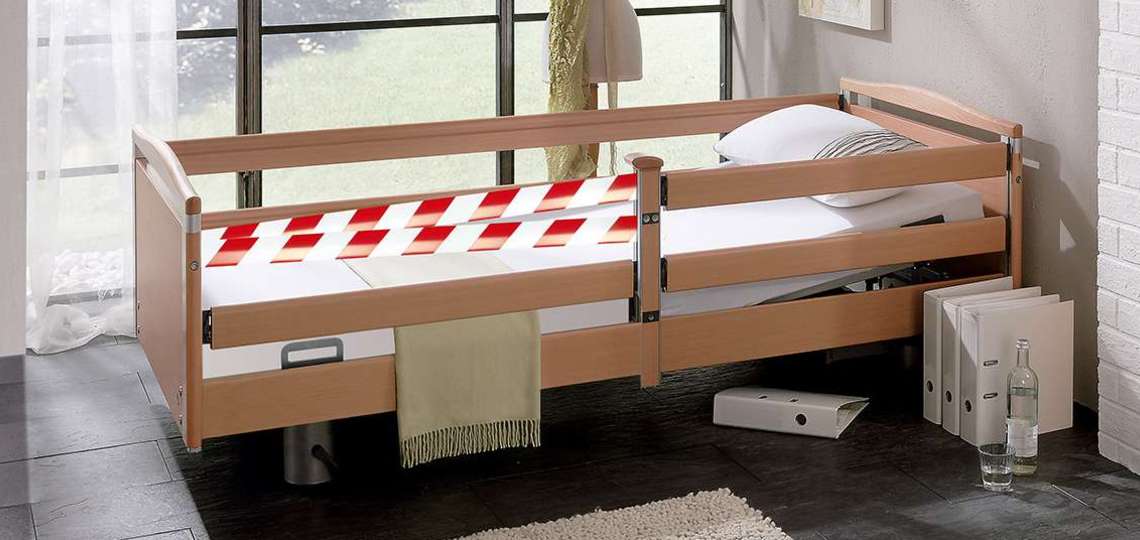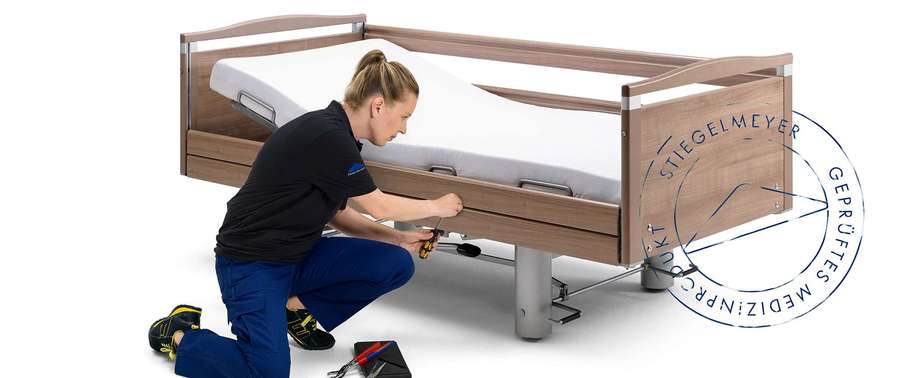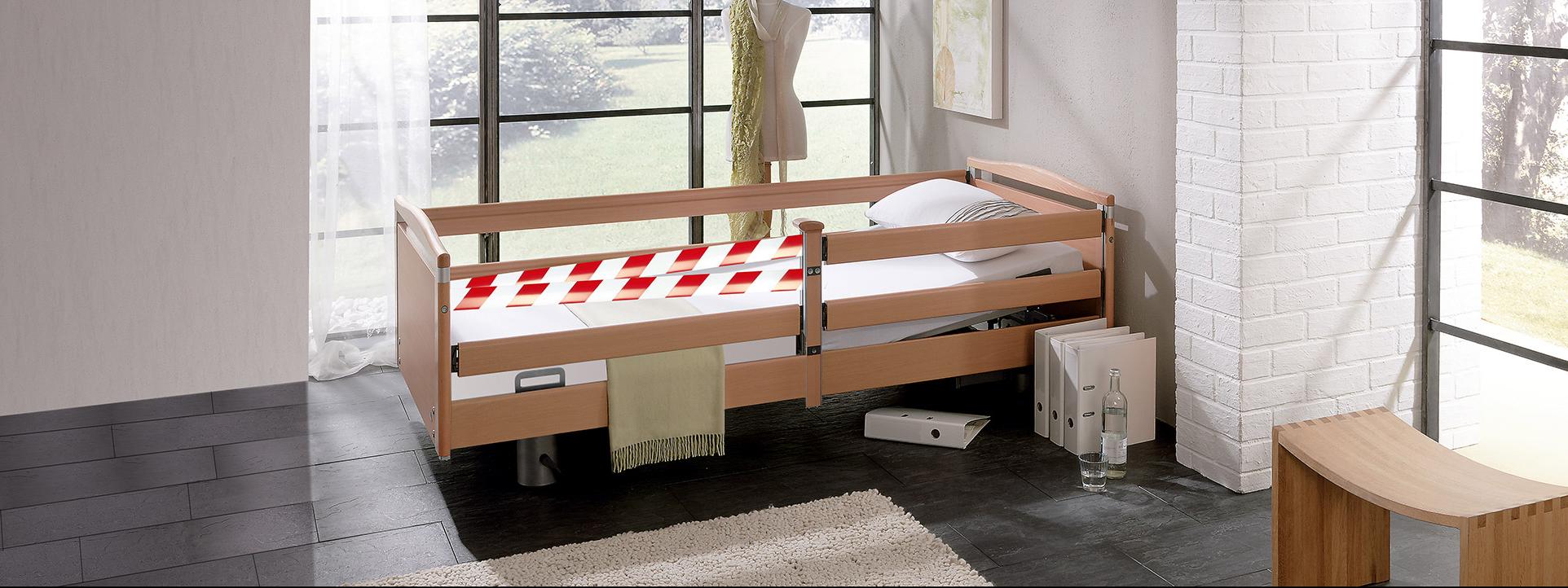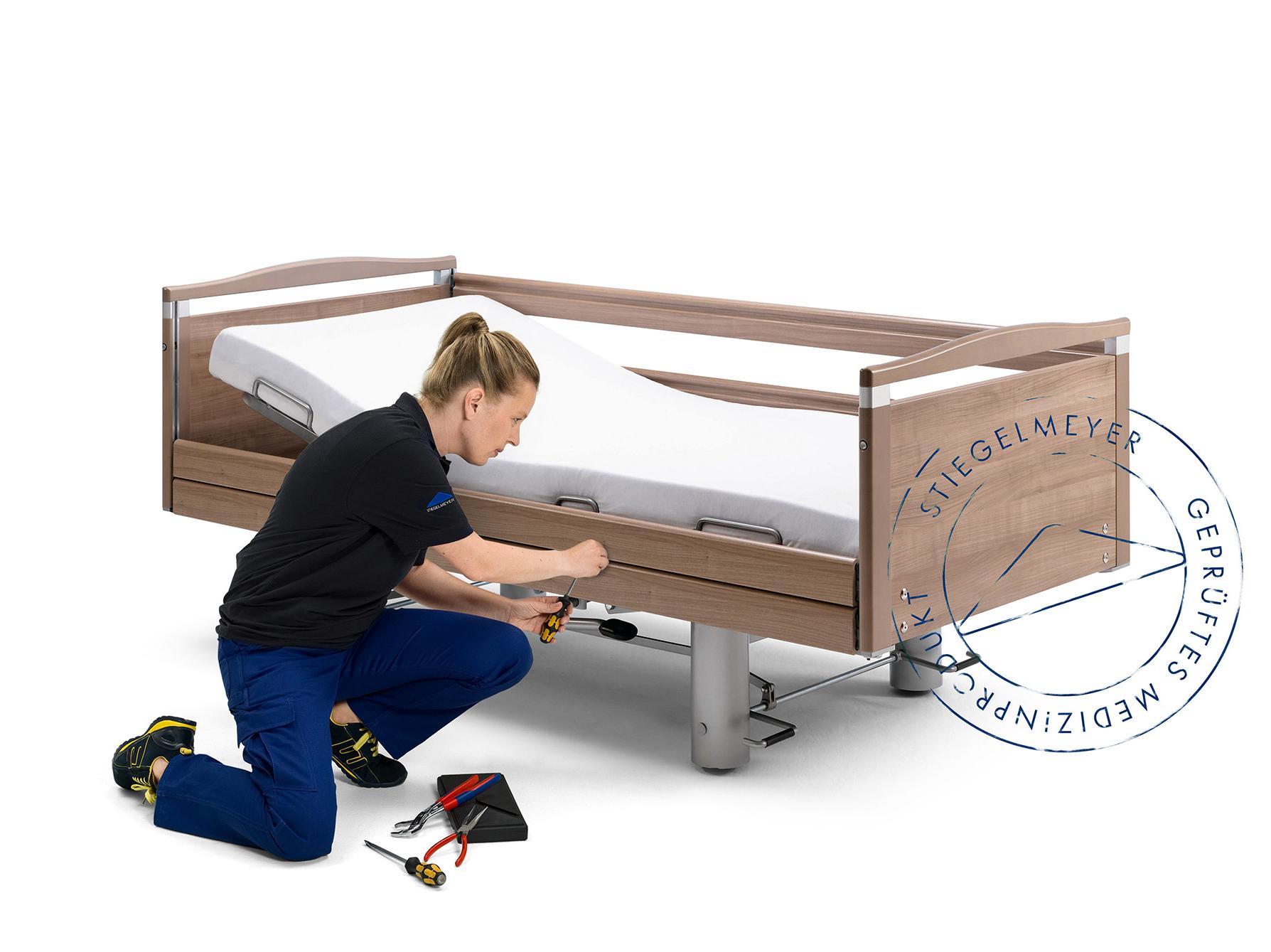
Avoiding the pitfalls of standards and legislation
Our customer centre explains what to look out for when inspecting beds
Patients and people in need of care are often particularly vulnerable. Their safety is of the utmost concern to all those in charge of hospitals and care homes. This includes the safe working order of the beds. But how do you ensure that inspections and maintenance meet the highest possible standards? And what legal requirements must be taken into account? We asked Stephan Zessel and Mario Ohl from Stiegelmeyer’s service centre.
If hospital beds and care beds have an adjustment facility using an electric or hydraulic actuator or a gas spring, they are classed as active medical devices, explains Stephan Zessel. This brings them within the reach of the Medical Devices Act and the Medical Devices Operator Ordinance which is derived from this act. Beds that have an electric motor must also comply with the regulations of the German Statutory Accident Insurance Association (DGUV) relating to testing electrical equipment. These regulations also apply to electrical appliances which are not medical devices – such as a refrigerator built into a bedside cabinet.
What do these regulations mean for hospitals, care homes and medical equipment retailers?
“The first thing to remember is that you, in your capacity as operator, are responsible for ensuring the good working order of your medical devices at all times”, says Stephan Zessel. However, the issue of how to satisfy this responsibility with an adequate response often throws up questions – particularly in care homes that do not have their own medical technology department. Stiegelmeyer’s service centre is a strong partner for operators, offering them tailor-made solutions.
The requirement relating to electrical testing is clearly defined: Once a year, a skilled electrician must carry out leakage current measurements to ensure that no unacceptable electric current is flowing through the metal parts of the bed. This interval can be considerably extended if a 24-volt system is used. Stiegelmeyer and Burmeier offer a drive system such as this using safety extralow voltage for many models of bed, often as standard supply. “With a 24-volt system, leakage current testing is only required every 10 years”, says Stephan Zessel. This saves effort and expense.
What about the other general working order of the beds?
The Medical Devices Act leaves a lot of room for discretion on the issue of who, with what qualification, should inspect the beds, and how often.
Stiegelmeyer recommends a visual and function check once a year. This is generally conducted according to the standards which applied at the time of each bed’s manufacturing. There are also superior standards, however, which prescribe it as mandatory that the current standard is met, irrespective of the year of manufacture. Stephan Zessel cites safety sides as an example: Nowadays they have to withstand a far higher weight load than they used to. Nevertheless, even safety sides from the 1990s are still compliant with standards in this respect. Lawmakers do not tolerate any compromises, however, when it comes to safety side dimensions: If they no longer comply with the current standard, the bed must be upgraded accordingly.
This example shows how much specialist knowledge is required when inspecting beds. Local trade and repair businesses often find this task too much of a challenge, says Stephan Zessel. “Or they hand the operator a list of defects after the inspection and leave the operator to deal with it themselves”, adds Mario Ohl. “In this case, the operator has to look at every bed concerned and ask himself: What do I do now? Who is going to repair this for me?
This is where Stiegelmeyer’s service centre shows its strengths.
Our experts offer an annual inspection, on the one hand, with an inspection report. But they also carry out maintenance and repairs to the beds if you wish them to do so. “The operator only needs to deal with the issue once: He needs to arrange an appointment with us”, says Mario Ohl. “He doesn’t need to do a thing after that. If there’s anything to repair on the bed, we do that straight away and also take care of spare parts. There’s no need to work on the bed several times, and the resident or patient doesn’t have to keep getting up. It’s simply all done and dusted.”
At the annual inspection date, our service centre technicians inspect all beds in the facility in one go, even if they were purchased in different months: “A bed is not like a car that has to pass the vehicle inspection (TÜV) in a certain month”, explains Stephan Zessel. If a facility has not taken out a contract with Stiegelmeyer, but books the inspection again every year, our service centre reminds the facility of the pending inspection date 4 to 6 weeks in advance.
With Stiegelmeyer, customers can rely on the fact that their beds are safe, and they save time and effort and avoid repeated expense. This is very reassuring in the daily care routine.
Do you have any questions? Just give us a call – or send us an e-mail.
Tel.: +49 (0) 5221 185 - 777
service@stiegelmeyer.com



